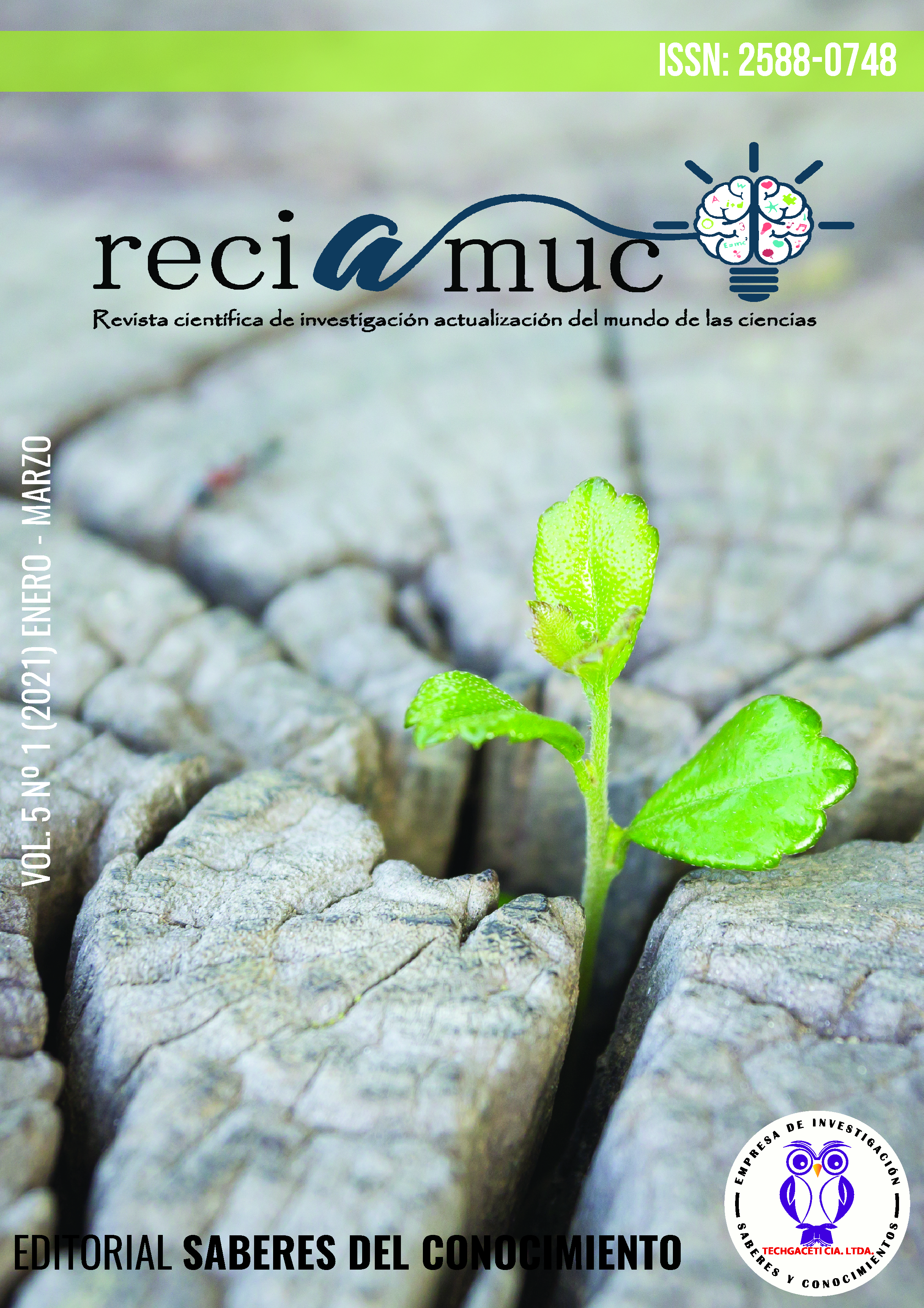Shock séptico en insuficiencia renal
DOI:
https://doi.org/10.26820/reciamuc/5.(1).ene.2021.189-198Keywords:
Sepsis, lesión renal aguda, enfermedad renal crónica, lesión pulmonar, grupo de alta movilidad recuadroAbstract
La lesión renal, incluida la lesión renal aguda (LRA) y la enfermedad renal crónica (ERC), se han vuelto muy común en pacientes críticamente enfermos tratados en UCI. Muchos estudios epidemiológicos han revelado asociaciones significativas de insuficiencia renal aguda (IRA) y de enfermedad renal crónica (ERC) con malos resultados de alta mortalidad y costos médicos. Aunque muchos estudios básicos han aclarado los posibles mecanismos de la sepsis y la IRA séptica, la traducción de los hallazgos obtenidos al entorno clínico no ha tenido éxito hasta la fecha. Actualmente no se dispone de ningún fármaco específico contra la sepsis humana o la IRA. El notable progreso de las técnicas de diálisis, como la terapia de reemplazo renal continua (TRRC), ha permitido el control de la "uremia" en pacientes hemodinámicamente inestables; sin embargo, los pacientes con IRA séptica que requieren diálisis siguen mostrando una mortalidad inaceptablemente alta. Por lo tanto, se deben realizar más investigaciones para mejorar el resultado de la sepsis y la IRA séptica. Comprender el papel de la lesión renal como amplificador en la sepsis y la insuficiencia orgánica múltiple podría apoyar la identificación de nuevos objetivos farmacológicos para la sepsis y la IRA séptica.
Downloads
References
Ahuja, N., Andres-Hernando, A., & Altmann, C. (2012). Circulating IL-6 mediates lung injury via CXCL1 production after acute kidney injury in mice. Am J Physiol Renal Physiol , 864–72.
Bagshaw, S., Laupland, K., & Doig, C. (2005). Prognosis for long-term survival and renal recovery in critically ill patients with severe acute renal failure: a population-based study. Crit Care , 700–9.
Bolívar, J. (2015). Investigación Documental. México. Pax.
Castro, J. (2016). Técnicas Documentales. México. Limusa.
Clark, E., Molnar, A., & Joannes-Boyau, O. (2014). High-volume hemofiltration for septic acute kidney injury: a systematic review and meta-analysis. Crit Care , 18-27.
Davila, A. (2015). Diccionario de Términos Científicos. . Caracas: Editorial Oasis.
Dellinger, R., Levy, M., & Rhodes, A. (2013). Surviving sepsis campaign: international guidelines for management of severe sepsis and septic shock: 2012. Crit Care Med , 580–637.
Doi, K., Leelahavanichkul, A., Yuen, P., & Star, R. (2009). Animal models of sepsis and sepsis-induced kidney injury. J Clin Invest , 2868–78.
Hsu, C., Ordonez, J., Chertow, G., Fan, D., & McCulloch, C. (2008). The risk of acute renal failure in patients with chronic kidney disease. Kidney Int , 101–7.
KDIGO Clinical Practice Guideline for Acute Kidney Injury. (2012). Kidney Disease: Improving Global Outcomes (KDIGO) Acute Kidney Injury Work Group. Kidney Int , 1–138.
Leelahavanichkul, A., Huang, Y., Hu, X., & Zhou, H. (2011). Chronic kidney disease worsens sepsis and sepsis-induced acute kidney injury by releasing high mobility group box protein-1. Kidney Int , 1198–211.
Liu, K., Glidden, D., & Eisner, M. (2007). Predictive and pathogenetic value of plasma biomarkers for acute kidney injury in patients with acute lung injury. Crit Care Med , 2755–61.
Molitoris, B. (2014). Therapeutic translation in acute kidney injury: the epithelial/ endothelial axis. J Clin Invest , 2355–63.
Wald, R., McArthur, E., Adhikari, N., Bagshaw, S., Burns, K., & Garg, A. (2014). Changing incidence and outcomes following dialysis-requiring acute kidney injury among critically ill adults: a population-based cohort study. Am J Kidney Dis , 870–7.
Yumoto, M., Nishida, O., & Moriyama, K. (2011). In vitro evaluation of high mobility group box 1 protein removal with various membranes for continuous hemofiltration. Ther Apher Dial , 385–93.



